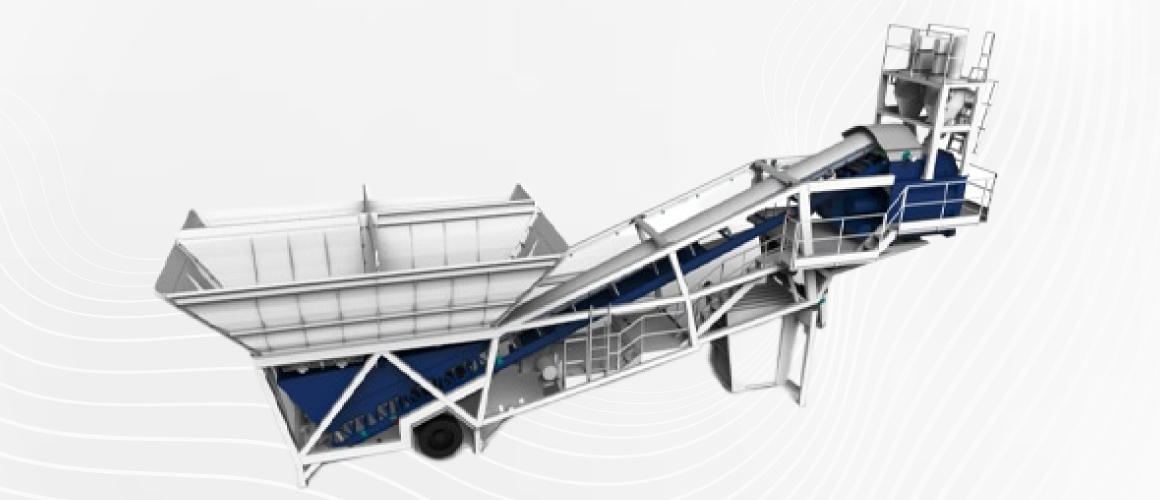What are the Precautions Adopted for Concrete Batching Plant?

The construction industry is the driving force behind infrastructure and economic growth, and concrete batching plants are at its core. These plants ensure the right mix of materials to produce quality concrete for everything from roads and bridges to buildings, making them essential for successful projects.
But running a batching plant isn’t without its challenges. Issues like machinery breakdowns, dust control, worker safety, and environmental concerns can quickly derail operations if precautions aren’t taken seriously.
In this article, we’ll break down the key precautions needed to keep concrete batching plants running safely, smoothly, and efficiently.
1. Site Selection and Preparation
The location of the concrete batching plants significantly impacts its operation and safety. Proper site preparation minimizes hazards and ensures smooth workflow.
- Location Assessment: Choose a site with adequate space, away from residential areas, to reduce noise and dust exposure.
- Drainage System: Ensure proper drainage to avoid waterlogging, which can compromise equipment integrity and worker safety.
- Ground Stability: The ground must be level and stable to support the heavy machinery and prevent tilting or collapse.
2. Regular Maintenance of Equipment
Malfunctioning equipment can lead to accidents or production downtime. Regular maintenance ensures reliability and longevity.
- Routine Inspections: Check machinery for wear and tear, oil leaks, or loose components.
- Calibration of Weigh Scales: Ensure precise measurement of ingredients to prevent poor-quality concrete production.
- Lubrication and Cleaning: Proper lubrication prevents friction-related damage, while cleaning minimizes the buildup of debris in mixers and conveyors.
3. Worker Safety Measures
The workforce’s safety is a priority in concrete batching plants operations. Employers must enforce safety protocols and provide essential training.
- Personal Protective Equipment (PPE): Workers should wear helmets, gloves, high-visibility vests, and dust masks.
- Training Programs: Regular training on equipment handling, emergency procedures, and first aid is essential.
- Restricted Access: Limit plant access to authorized personnel only to avoid accidents involving untrained individuals.
4. Dust and Noise Control
Batching plants generate dust and noise, which can harm both workers and nearby communities if not managed properly.
- Dust Suppression Systems: Install water sprayers and dust collectors to control airborne particles.
- Enclosed Conveyors: Enclose material conveyors to minimize dust release during transport.
- Noise Barriers: Use soundproof walls or barriers to mitigate noise pollution from mixers and machinery.
5. Environmental Precautions
Minimizing environmental impact is critical for compliance with regulations and sustainable operations.
- Wastewater Management: Treat wastewater from the plant to prevent contamination of nearby water bodies.
- Material Storage: Store aggregates, cement, and additives in covered or sealed containers to prevent spillage and pollution.
- Energy Efficiency: Opt for energy-efficient machinery to reduce carbon emissions.
6. Emergency Preparedness
Even with precautions, emergencies can occur. Being prepared minimizes the risks.
- Fire Safety Measures: Install fire extinguishers, smoke detectors, and sprinkler systems throughout the plant.
- Emergency Exits: Clearly mark emergency exits and ensure pathways are unobstructed.
- First Aid Kits: Keep well-stocked first aid kits accessible at multiple locations.
7. Automation and Monitoring
Adopting modern technology can enhance safety and efficiency.
- Automated Systems: Use automated batching systems to reduce manual errors and improve precision.
- Monitoring Tools: Install sensors and cameras to monitor operations in real time and detect potential issues early.
- Data Analysis: Analyze operational data to identify patterns and implement preventive measures.
8. Compliance with Regulations
Adhering to local and international standards ensures safety and prevents legal complications.
- Permits and Licenses: Obtain necessary permissions before setting up the plant.
- Inspection by Authorities: Regular inspections by regulatory bodies help ensure compliance.
- Record Keeping: Maintain detailed records of maintenance, inspections, and training programs.
10 Pro Tips for Improving Efficiency at Concrete Batching Plants
Improving efficiency in concrete batching plants is key to maintaining smooth operations, minimizing costs, and ensuring high-quality output. Here are detailed, practical, and technical tips to boost productivity and reduce downtime:
- Conduct regular inspections and preventive maintenance to avoid unexpected equipment breakdowns.
- Optimize plant layout for efficient material flow and reduce transport times.
- Use automated batching systems and control panels to improve accuracy and reduce manual errors.
- Install enclosed conveyors and dust suppression systems to minimize material spillage and dust pollution.
- Calibrate weighing scales and sensors regularly for precise measurements.
- Monitor real-time plant performance using IoT sensors and predictive maintenance tools.
- Train workers in equipment operation, safety protocols, and efficient production practices.
- Implement energy-efficient motors, variable frequency drives (VFDs), and water recycling systems.
- Maintain critical spare parts inventory to reduce downtime during repairs.
- Streamline production schedules and material deliveries to meet project demands efficiently.
Technology’s Role in Modern Batching Plants
Showcase how technology is transforming concrete production and safety measures.
- Remote Monitoring: Sensors and real-time cameras allow plant managers to monitor operations from anywhere.
- Dust Collection Systems: Advanced systems minimize dust emissions, ensuring compliance and worker health.
- Predictive Maintenance Tools: Smart systems predict equipment issues before they become critical, reducing downtime.
- Green Solutions: Highlight eco-friendly innovations like energy-efficient plants or systems that recycle wastewater.
The final verdict
Running a concrete batching plant smoothly comes down to smart decisions, regular upkeep, and a bit of the right know-how. When everything clicks, you save time, cut down costs, and keep quality on point.
If you’re looking for expert advice or reliable batching solutions, we’re here to help. Reach out to us at info@aaspaequipment.com and let’s get things rolling!
